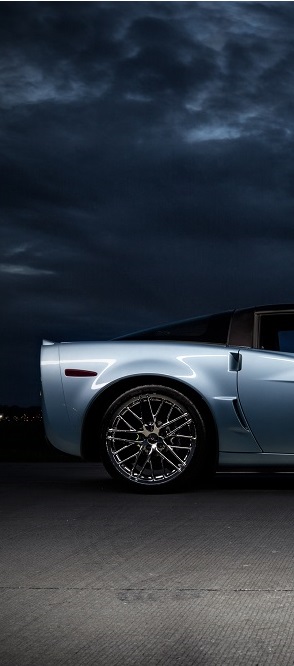

Chevy Big Blocks W series –2nd Gen-The best V8 ever produced-maybe
The “W” engine is evolving into the “Mark IV” which differs in combustion chamber shape and the valves also sit slightly differently in the heads. The firing chamber is solely in the block in the W which makes for a quick drop in the power curve around 6500 rpm. The Mark IV engine has a more traditional wedge shaped firing chamber with the piston TDC (top dead center) on the power stroke. The cylinder bore is at a 90 degree angle to the deck of the block. The valves placement in the heads is the same as the “W” series engine but angled so they open away from the cylinder walls and away from the piston heads; rocker arm held in place by studs made this possible. The revision in the valves action vastly improves the volumetric efficiency increasing the power created at high rpm which equates to more available horse power at racing speeds. The automobile press calls this the “porcupine design” because of the compounded angles of the valves. The spark plugs also enhance the horse power rating by entering the firing chamber angled towards the cylinders center line which works better than the “W” with the plugs at 90 degrees. The scalloped valve covers the “W” had are no longer needed they are upgraded to broad rectangle shaped covers.
Shop talk used by GM personnel-the engineers, designers, and the more menial or less professional staff (management) refer to the big blocks series as “the rat motor” while the small blocks are “the mouse motor” in all variations except the ZL-Can-Am model. The Mark IV is 20 lbs. heavier than the “W” with a dry weight of about 685 Lbs (311 Kg). The revised heads, an altered bore hole angle, and the valve configuration are the biggest changes on the Mark IV series over the “W” predecessor-keeping most of the same dimensions and mechanics used as well. The Mark IV block is more substantial but the bore centre remains the same at 4.84 inches although the main bearings are larger by .25 inches in the later engine which means the old shorter stroke crank shafts from the 409 and even the original 348 could be interchanged with the newer design by using “spacer bearings” with no crankshaft modification necessary.
For high performance applications pistons are impact extruded (forged), the same as the “W” style, with a solid skirt and crowned; although they are a casting for lesser powered engines. Two other features are carried over from the “W” are, firstly, the track-proved Moraine aluminum main bearings that were originally used in the 409 and the very effective “side oiling” lubrication system. Efficient side oiling does receive a “tune up” on later high performance engines with the main oil reservoir moved forward to the camshaft bearing bore area ensuring the main and connecting rod bearings always receive adequate lubrication. The Mark IV engine has a sturdy crank case design, rugged forged steel crankshaft, with huge four bolt main bearing caps, equating to possibly the most sturdy and dependable high performance big block V8 engine ever made.
Republished by Blog Post Promoter










